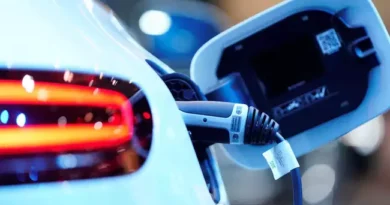Inside EV startup Fisker’s collapse: how the company crumbled under its founders’ whims
An autonomous pod. A solid-state battery-powered sports car. An electric pickup truck. A convertible grand tourer EV with up to 600 miles of range. A “fully connected mobility device” for young urban innovators to be built by Foxconn and priced under $30,000. The next Popemobile.
Over the past eight years, famed vehicle designer Henrik Fisker suggested his electric vehicle startup would deliver on all of these promises. None came true.
Taking Fisker’s first and only model, the Ocean SUV, from the sketchbook to the assembly line was no small feat. One look at the wreckage left by other EV startups that tried to recreate Tesla’s success illustrates how difficult it can be.
The road to Fisker’s ultimate ruin may start and end with its flawed Ocean SUV, which has been riddled with mechanical and software problems. But it was paved with hubris, power struggles, and the repeated failure to set up basic processes that are foundational for any automaker.
“The lack of processes and procedures was kind of mind-blowing,” Sean O’Grady, a former regional sales manager at Fisker, told TechCrunch. “The same excuse that I kept hearing all the time was, well, if you’ve never worked for a startup before, this is what it’s like, it’s chaotic.”
That chaos may be what ultimately dooms the company, according to O’Grady and seven other employees, who have spoken to TechCrunch on the condition of anonymity over the last few months. It persisted throughout the company, seeping into seemingly every division.
Employees say they were drowning from this lack of process while the leadership team focused on protecting Fisker’s reputation. Every wrong decision took the company further from its goal of making and selling a mass-market EV.
Fisker employees, meanwhile, often slogged through 18-hour days to field concerns, fix problems, find the missing payments and properly document the SUVs, often going far beyond the duties typically associated with the roles they were hired to perform.
Many, if not most, have now been laid off.
Driven by “cool”
Chaotic episodes were a constant at Fisker, and that made it all the more difficult to build, sell and ship cars, the employees say.
Wheel spacers go in between the wheel and the wheel hub, making the tires look more pronounced. They are also uncommon. Two people familiar with the decision said Henrik Fisker wanted to do this to make the cars look “cool.” He also wanted to sell them as accessories, they said.
But it was already pretty late in the process to make a change like this, and the spacers had not gone through the typical internal approvals. The spacers had no internal part number, meaning they couldn’t be easily tracked if something went wrong. Some employees felt there had not been enough internal testing done to validate that the spacers were safe.
The decision eventually rocked Fisker’s engineering team. The lead chassis engineer at the time, Brent Demers, sent an email in March 2023 to a group that included the VP of engineering, William Stinnett, saying Fisker’s Design and Studio team was “acting alone” installing the spacers “without proper validation and regard for previous engineering recommendations,” according to a copy viewed by TechCrunch. Demers asked to “introduce the spacers into the project by means of proper channels” instead.
Customer service, a chatbot and unpaid bills
Geeta Gupta-Fisker’s decisions also gave employees whiplash. As the chief financial officer and chief operating officer — and also Henrik’s wife and co-founder — she has held considerable sway at the company.
In 2021, as the company was still working its way toward entering production, one employee recalled Gupta-Fisker’s reticence to use a customer service call center once vehicles were launched.
It wasn’t until then that Gupta-Fisker reversed course, according to former employees. To help address the influx of customer service calls, Fisker hired a company in October 2023 called Prelude Systems, which promised to provide a mix of on- and off-shore service representatives.
That fix didn’t last long, though. By January 2024, the call center workers had vanished from Fisker’s internal Salesforce system, according to two of the employees.
Most workers didn’t know it at the time, but Fisker had stopped paying the company, according to a new lawsuit filed in federal court in May. Prelude alleges in the lawsuit that Fisker owes at least $660,000.
Parts shortage
Gupta-Fisker also turned down requests to build out a large stockpile of service parts, according to two of the employees. It’s a crucial buffer that automakers usually build up to handle repairs and other fixes as they iron out the kinks in the initial run of cars.
According to employees, Gupta-Fisker’s resistance to the idea was driven by an effort to save money. Fisker leadership supported the decision by pointing to a McKinsey survey that showed EVs require less service and fewer parts, according to one of the employees.
The company accumulated some spare parts, according to the employees. However, they struggled with the quality and supply cadence. The employees say this was exacerbated because Fisker waited too long to stand up a proper supplier quality team – a group typically tasked with auditing suppliers to make sure their parts and processes are up to snuff.
The spare parts issue became problematic as Fisker’s Ocean SUV ran into myriad mechanical and software issues. There were problems with the door-locking mechanisms and door handles. The key fobs didn’t regularly work. The bolts on the Ocean’s hood had a tendency to come loose, which led to some flying up and cracking the windshield, or doing damage to the body.
In an attempt to alleviate this, Fisker started “pinching” parts from Magna’s production line in Austria, multiple employees told TechCrunch. The list of parts approved for pinching included electronic control units, locking mechanisms, windshields, hoods and exterior panels, among others.
But even that wasn’t enough, since those parts would still have to make it all the way to the U.S. before Fisker could fix some of the affected cars.
DeBord told TechCrunch that all these claims are false. Finnucan did not respond to a request for comment.
In a few desperate moments, according to two employees, Fisker had Magna employees bring parts to the U.S. in their luggage so that the company could service customer cars. (DeBord said Fisker “cannot comment on another company’s employees or that company’s travel policies.”)
Even if Fisker had built up a proper stockpile of spare parts, the employees say, the company never put a proper warranty process in place, which created more headaches.
Fisker also did not set aside money to cover warranty repairs, according to the employees – marking another departure from a standard industry practice.
DeBord said any claims that Fisker’s warranty system was a mess are false, and that “the information flow from Salesforce to SAP is seamless.”
Inside the winding down
The chaos has continued to haunt the company in its declining months. On March 27, employees received alarming news: the company was immediately leaving its headquarters in Manhattan Beach. Dozens scurried to the glass-and-steel building in a panic, gathering their belongings to bring home or move to the company’s engineering facility in La Palma.
The company had already scrambled to perform an internal audit to track down the missing $16 million in customer payments. Its external auditor, PwC – which said this month that it will not stand for reappointment – was constantly peppering the startup with document requests in the run-up to the release of its annual financial report.
O’Grady told TechCrunch that Fisker leadership also asked employees to contact owners of the Ocean One, a special version of the SUV limited to 5,000 units. The company had promised a “benefits package” that included a warranty extension, special tires, a more advanced computer to run the infotainment system and $1,000 worth of charging credits. The total value was promoted to be around $7,500, making it a sort of stand-in for the federal EV tax credit, which Fisker vehicles weren’t eligible for since they’re built in Austria.
“If you’re talking about 5,000 Ocean Ones, then you’re talking about $37.5 million in benefits that you owe to these customers. And to this point in time not a single customer has seen a penny,” O’Grady said.
Fisker was eager to sell the remaining Oceans because it was losing access to the largest places where the SUVs were stored. In early May, the company lost access to the so-called vehicle processing center in Atlanta, according to two of the employees. That meant it might have to find new homes for hundreds of cars.
“The company cares too much about their reputation,” O’Grady told TechCrunch. “It’s almost like that’s the first thing on their mind all day, every day.”
Correction: The original version of this article stated that Geeta Gupta-Fisker is Fisker’s chief financial officer and chief commercial officer. She is the chief financial officer and chief operating officer. The article has been corrected to reflect this.
Bytechcrunch




